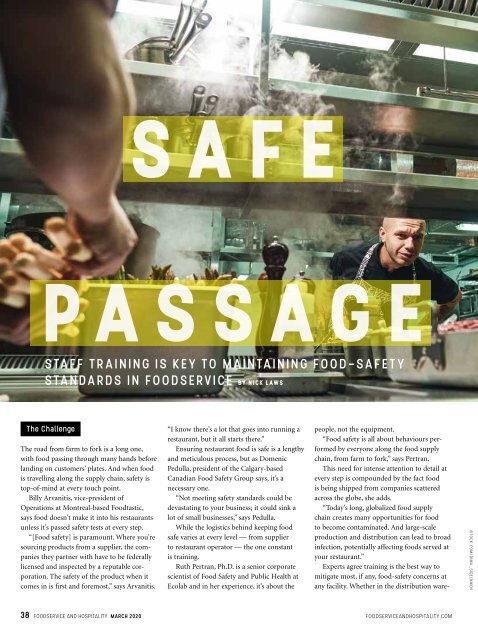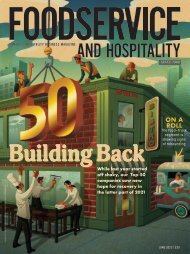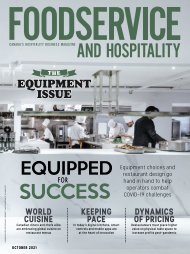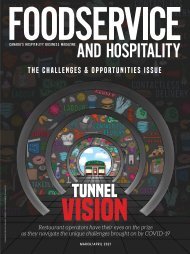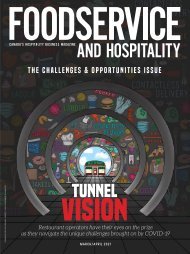FH0320
Create successful ePaper yourself
Turn your PDF publications into a flip-book with our unique Google optimized e-Paper software.
S A F E<br />
PASSAGE<br />
STAFF TRAINING IS KEY TO MAINTAINING FOOD-SAFETY<br />
STANDARDS IN FOODSERVICE BY NICK LAWS<br />
The Challenge |<br />
The road from farm to fork is a long one,<br />
with food passing through many hands before<br />
landing on customers’ plates. And when food<br />
is travelling along the supply chain, safety is<br />
top-of-mind at every touch point.<br />
Billy Arvanitis, vice-president of<br />
Operations at Montreal-based Foodtastic,<br />
says food doesn’t make it into his restaurants<br />
unless it’s passed safety tests at every step.<br />
“[Food safety] is paramount. Where you’re<br />
sourcing products from a supplier, the companies<br />
they partner with have to be federally<br />
licensed and inspected by a reputable corporation.<br />
The safety of the product when it<br />
comes in is first and foremost,” says Arvanitis.<br />
“I know there’s a lot that goes into running a<br />
restaurant, but it all starts there.”<br />
Ensuring restaurant food is safe is a lengthy<br />
and meticulous process, but as Domenic<br />
Pedulla, president of the Calgary-based<br />
Canadian Food Safety Group says, it’s a<br />
necessary one.<br />
“Not meeting safety standards could be<br />
devastating to your business; it could sink a<br />
lot of small businesses,” says Pedulla.<br />
While the logistics behind keeping food<br />
safe varies at every level — from supplier<br />
to restaurant operator — the one constant<br />
is training.<br />
Ruth Pertran, Ph.D. is a senior corporate<br />
scientist of Food Safety and Public Health at<br />
Ecolab and in her experience, it’s about the<br />
people, not the equipment.<br />
“Food safety is all about behaviours performed<br />
by everyone along the food supply<br />
chain, from farm to fork,” says Pertran.<br />
This need for intense attention to detail at<br />
every step is compounded by the fact food<br />
is being shipped from companies scattered<br />
across the globe, she adds.<br />
“Today’s long, globalized food supply<br />
chain creates many opportunities for food<br />
to become contaminated. And large-scale<br />
production and distribution can lead to broad<br />
infection, potentially affecting foods served at<br />
your restaurant.”<br />
Experts agree training is the best way to<br />
mitigate most, if any, food-safety concerns at<br />
any facility. Whether in the distribution ware-<br />
iSTOCK.COM/DIMA_SIDELNIKOV<br />
38 FOODSERVICE AND HOSPITALITY MARCH 2020 FOODSERVICEANDHOSPITALITY.COM


